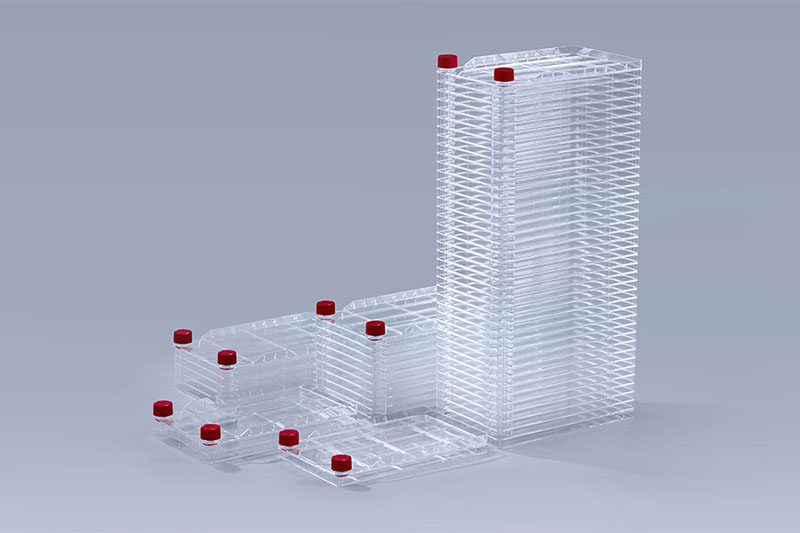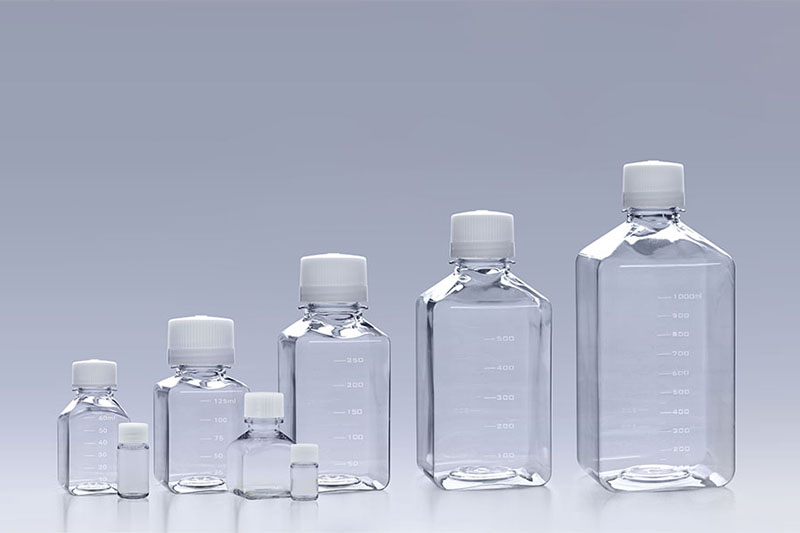The therapeutic potential of messenger RNA (mRNA) therapeutics has an unprecedented ability to target previously undruggable diseases. The poly(A) tail drives the therapeutic efficacy of the mRNA molecule. Using Droplet Digital PCR (ddPCR) technology to analyze poly(A) tail length and integrity yields unrivaled sensitivity, enabling developers to ensure high poly(A) tail integrity and, ultimately, functional therapeutic mRNAs.
mRNAs: Leveraging A Novel Approach to Extend Therapeutic Reach
The use of mRNA in a therapeutic capacity has provided a novel approach for therapeutic targets previously considered undruggable. As part of a larger ecosystem of therapeutic RNA molecules, mRNAs have become increasingly prevalent in recent years, given their successful use in a timely deployment of COVID-19 vaccines. Additionally, they possess several inherent benefits that arise from their non-integrative and transient nature (Damase et al. 2021 and Qin et al. 2022). Therapeutic use of mRNAs can be utilized in several different treatment modalities. As a vaccine, mRNAs encoding antigens can be delivered to induce protective immunity. Additionally, cells can be modified ex vivo by transfecting them with mRNA, and the corrected cells can subsequently be administered to the patient (U.S. Pharmacopeial Convention). Finally, to replace a defective gene or protein, mRNAs can be directly administered in vivo (U.S. Pharmacopeial Convention).
Poly(A) Tails: The Achilles’ Heel in Therapeutic mRNAs
Regardless of the application, therapeutic mRNAs have similar structural or compositional components. Each molecule consists of a single-stranded open reading frame (ORF) that contains the sequence of interest, which is the primary differentiator and is tied to the therapeutic intent. The ORF is flanked on either side by untranslated regions (UTRs). At the front of the molecule resides the 5′ cap, which functions in mRNA translation (Qin et al. 2022). The 3′ end of the molecule is composed of the poly(A) tail, a chain of adenosine residues, which has several critical roles in both mRNA stability and translation (Liu and Wang 2022).
mRNAs are inherently unstable and prone to degradation; however, the poly(A) tail enhances stability by serving as a buffer to protect the molecule from degradation, with longer tails offering more protection (Liu and Wang 2022). In naturally occurring eukaryotic mRNAs, the poly(A) tail is typically 100–250 adenosines in length, with a minimum length of 20 required for efficient translation (To and Cho 2021).
The poly(A) tail also promotes mRNA translation by recruiting translational proteins (eukaryotic initiation factors 4G and 4E) (To and Cho 2021). Interactions between the poly(A) tail and these translation proteins, together with the 5′ cap, produce a “closed-loop” structure that promotes mRNA translation (Qin et al. 2022).
Given the importance of the poly(A) tail for mRNA translation and stability, it’s no surprise that the design and integrity of the poly(A) tail can significantly impact the efficacy of therapeutic mRNAs. Multiple strategies have been employed to further enhance mRNA stability and translational capacity through the rational design of poly(A) tails.
Length — In general, longer poly(A) tails provide more stability and translation efficiency. One study reported increased stability and efficiency with poly(A) tails 120 adenosines in length as compared to 51 adenosines (Holtkamp et al. 2006). Similarly, another study reported functional superiority of mRNA with a poly(A) tail 325 adenosines in length, as compared to 172 adenosines (Grier et al. 2016)
Chemical modifications — The introduction of specific chemical modifications to the poly(A) tail can also enhance translational efficiency. Multiple studies have investigated different variations, including phosphorothioate modification, with some success (Liu and Wang 2022)
Structure — Changes to the structure of the poly(A) tail have been shown to be effective for improving therapeutic mRNA efficacy. Research has shown that through the introduction of segments — elements 40–60 nucleotides long and containing at least two adenosines separated by a spacer element of a different length — translation efficiency is enhanced compared to the native poly(A) sequence (Trepotec et al. 2019)
Analytical Methodologies for Poly(A) Tail Analytical Characterization
Given the experimental evidence that the poly(A) tail can influence therapeutic efficacy by modulating the translational capacity of the mRNA molecule, the U.S. Pharmacopeial Convention (USP) and others now recognize the importance of verifying poly(A) tail length and integrity in mRNA-based therapeutics. Currently, the USP recommends using ion pair reversed-phase high performance liquid chromatography (IP-RP-HPLC) to assess the degree of poly(A) tail occurrence and length. This method can separate and quantitate mRNA molecules with and without a poly(A) tail (U.S. Pharmacopeial Convention). Although this method is well-suited for smaller sequences, it struggles with longer RNA sequences and the on-column stability of these longer sequences poses an additional challenge to using this method (Fekete et al. 2023).
Droplet Digital PCR (ddPCR) has broad applications in mRNA-based therapeutics due to several inherent benefits of the method, including absolute quantification in the absence of a standard curve, high tolerance to PCR inhibitors, and unrivaled sensitivity and specificity. As such, ddPCR technology has been proposed as an orthogonal method to IP-RP-HPLC for the poly(A) tail quantification and integrity analysis.
Pfizer recently demonstrated robust ddPCR-based detection of poly(A) tail content in fractionated SARS-CoV-2 spike protein. These findings supported initial observations made by IP-RP-HPLC and showed that ddPCR technology can provide a precise measurement of the degree of poly(A) tail occurrence in the variable fractions of the mRNA (Patel et al. 2023).
Conclusions
The COVID-19 pandemic catapulted mRNAs to the forefront of novel therapeutic approaches, and mRNA has now entered the main stage of therapeutic development and commercialization for multiple indications. The poly(A) tail is central to mRNA translatability, stability, and ultimately, therapeutic benefit. As with other therapeutics, a robust analytical portfolio is paramount to ensure mRNA product integrity and success. Assessing poly(A) tail length and stability is a critical quality control measure for therapeutic mRNAs. Though IP-RP-HPLC is the primary method for evaluating poly(A) tails, ddPCR technology is an attractive orthogonal approach that can enhance analytical capability and confidence to ensure the successful development of RNA-based therapeutics for previously untreatable conditions.
Source: https://www.bioradiations.com/polya-tails-in-mrna-based-therapeutics-823/
The FAI climbed 5.9 percent year-on-year in the first 11 months of 2018, quickening from the 5.7-percent growth in Jan-Oct, the National Bureau of Statistics (NBS) said Friday in an online statement.
The key indicator of investment, dubbed a major growth driver, hit the bottom in August and has since started to rebound steadily.
In the face of emerging economic challenges home and abroad, China has stepped up efforts to stabilize investment, in particular rolling out measures to motivate private investors and channel funds into infrastructure.
Friday's data showed private investment, accounting for more than 60 percent of the total FAI, expanded by a brisk 8.7 percent.
NBS spokesperson Mao Shengyong said funds into weak economic links registered rapid increases as investment in environmental protection and agriculture jumped 42 percent and 12.5 percent respectively, much faster than the average.
In breakdown, investment in high-tech and equipment manufacturing remained vigorous with 16.1-percent and 11.6-percent increases respectively in the first 11 months. Infrastructure investment gained 3.7 percent, staying flat. Investment in property development rose 9.7 percent, also unchanged.
 English
English



















































 Cell Factory Systems
Cell Factory Systems PETG Media Bottles
PETG Media Bottles PC Carboys
PC Carboys